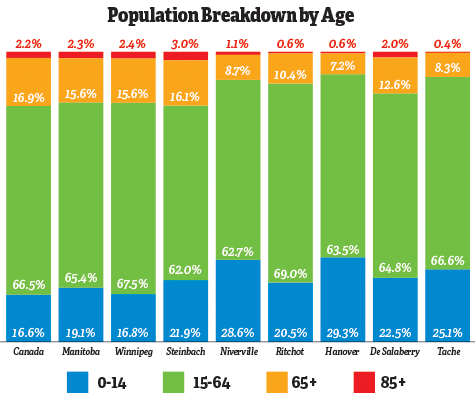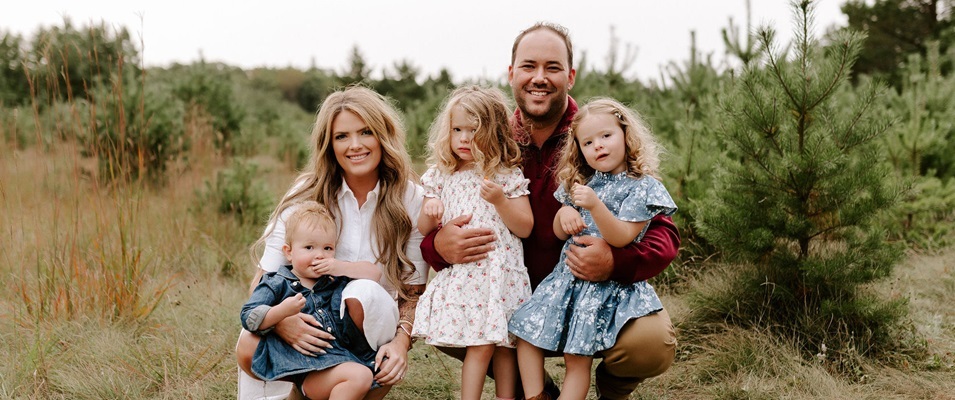
Early in May, Statistics Canada released it a new round of data from the 2016 census, bringing with it more good news to residents of the southeast region. Results announced in February reconfirmed that Niverville is still the fastest growing community in Manitoba, and that the RM of Ritchot is growing almost as quickly. The most recent stats show that this region is also among the youngest in the nation.
According to the data, 28.6 percent of Niverville’s population is younger than 15, an increase of more than a third since 2011. The number reflects the large number of young families who have moved to the area over the preceding decade.
The population is even younger in the RM of Hanover, where the under-15 set comprises 29.3 percent. In fact, Hanover is the sixth youngest municipality in Canada with a population over 5,000. Although Niverville sits below the threshold to rank in that category, with a population of 4,610, by extension it too must be among the country’s youngest communities.
Nationally, the population skews much older, with only 16.6 percent of the population falling into that category, and only 19.1 percent in Manitoba as a whole. Canada has seen a 20 percent increase in those over the age of 65.
Other neighbouring communities in the southeast all have younger than average populations: Ritchot’s youth make up 20.5 percent of the total, De Salaberry’s youth sit at 22.5 percent, and Tache boasts 25.1 percent young people. At the same time, these same municipalities all report lower than average distributions of people in the 65-plus category.
Further data is expected from Stats Canada in the summer and fall. Information about families, households, marital status, and language will be announced in early August, with income figures following in mid-September. October will bring stats pertaining to immigration and ethnocultural diversity, housing, and aboriginal peoples. The final scheduled release will occur in late November and cover education, labour, journey to work, language of work, and mobility and migration data.
Agriculture Numbers
While the southeast draws new residents, it continues to be home to a thriving agriculture industry. The 2016 census reveals that Manitoba’s farmers are the youngest in the nation, with the largest proportion of farm operators under the age of 35. The average age of farm operators in Manitoba is 53.8, second youngest in Canada after Quebec, which sits at 52.9. Those are the only two provinces below the national average.
The number of individual farms, however, has sharply decreased, going down 6.8 percent from five years ago. The number of farming operations has been in steady decline since 1941, and Manitoba’s decline is faster than the national average.
In 2016, agricultural operations in Manitoba employed 20,140 people, only 23.8 percent of whom are women, below the national average of 28.7 percent.
With the age of farm operators increasing steadily over the years, and currently sitting at 55 years, Stats Canada added a new question to the census in 2016: do farm operators have a written succession plan in place for their businesses? Only 8.1 percent of Manitoba operators answered yes, which is in line with operators across the country.
The province’s most plentiful crop is canola, the same as in 2011, and the soybean area has more than doubled, accounting for almost a third of the country’s total soybean production. Manitoba is home to Canada’s largest pig population, and the number of sheep increased by more than 40 percent.
Other highlights: 3.5 percent of Manitoba farms report using renewable energy systems, 1.1 percent produce organic products, and 6.1 percent of farms report selling products directly to consumers. The overall value of agricultural land has increased 64.5 percent since 2011, averaging $1,919 per acre. Although this may seem high to a layman, it’s still substantiable below the natural average of $2,696.


















